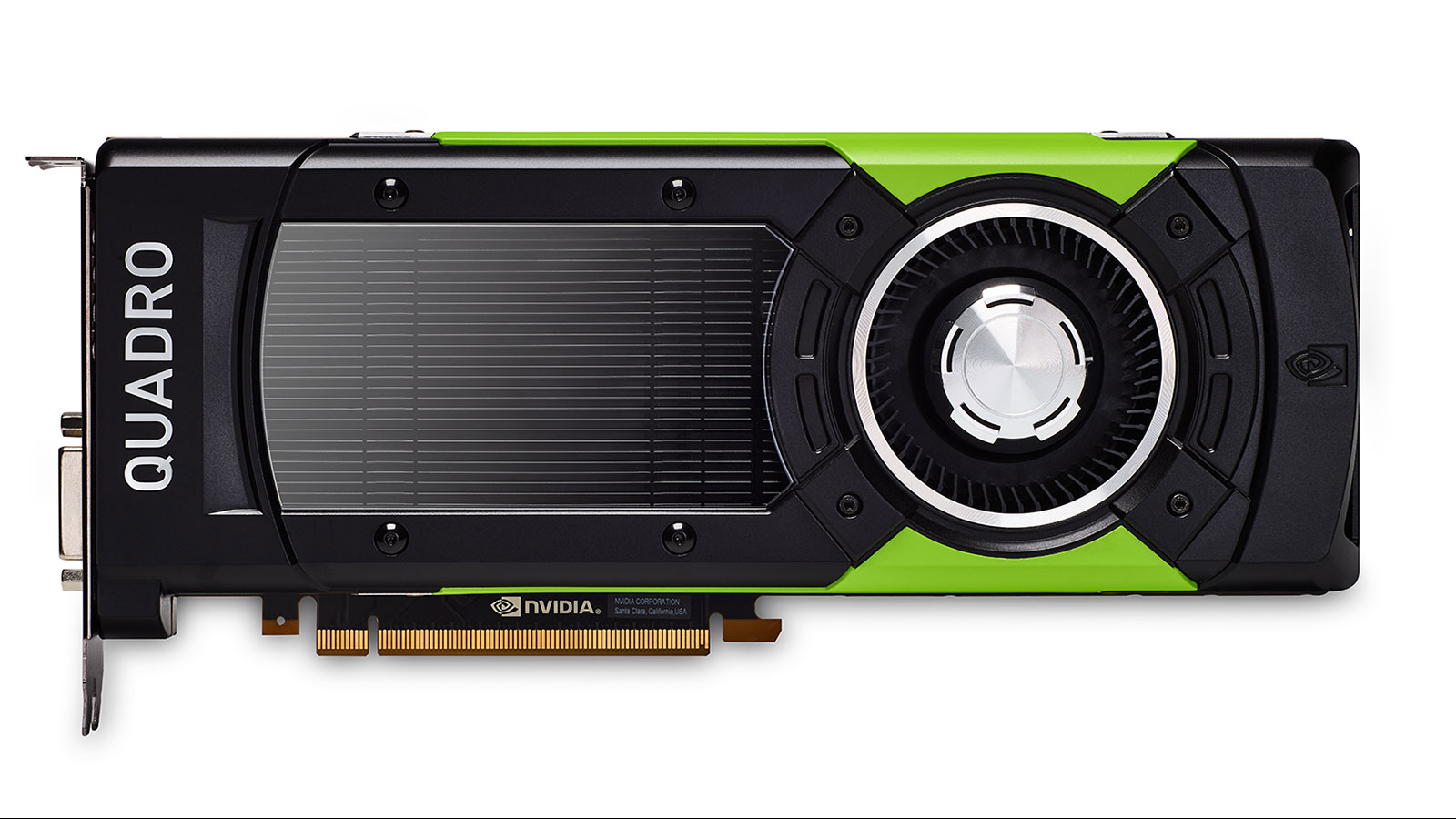What Nvidia's new $6000+ GPU means for gaming
Don't expect to see a GeForce equivalent any time soon.

Over the weekend, Nvidia announced a new graphics card. No, not the GTX 1080 Ti, which remains a poorly kept secret. Instead, we have the new Quadro GP100, the first PCIe graphics card version of Nvidia's big GP100 Pascal architecture. Up until now, the only place to get the GP100 has been the Tesla P100, which is only available via expensive server solutions like Nvidia's own $129,000 DGX-1 server (though that would give you eight Tesla P100 cards).
The difficulty with Tesla P100 is that the first models used Nvidia's custom NVLink mezzanine connector rather than a standard PCIe slot. Later, Nvidia released a PCIe variant, but it lacks any display output capabilities. Not surprisingly, if Nvidia can make a PCIe version of the Tesla P100, it's not a big jump to add display outputs, and that's precisely what the Quadro GP100 does.
Where Tesla is a compute-oriented solution, Quadro products are designed for professional graphics and multimedia work, including video editing, CAD/CAM, 3D rendering, and more. There's definitely an area of overlap between the two lines, if you wanted to draw a Venn diagram, but the GP100 slots in at the top of the Quadro stack, superseding the Quadro P6000 in some ways… and yet not in others.
The GP100—and let's be clear, using GP100 as both the GPU name and the product name gets confusing—uses HBM2 memory instead of GDDR5X, which means GP100 has significantly more memory bandwidth—720GB/s if it's like the Tesla P100, compared to 480GB/s on the P6000. But move on to the other specifications and things become a bit more fuzzy. P6000 uses a fully enabled GP102 GPU with 3,840 CUDA cores clocked at 1530MHz, yielding ~12 TFLOPS of single-precision performance, and it comes with 24GB of GDDR5X memory. The Quadro GP100 meanwhile has 16GB of HBM2, with 3,584 CUDA cores delivering 10.3 TFLOPS of single-precision compute, which means a clock speed of around 1430MHz. So you get more memory bandwidth but less memory and compute. The GP100 also uses less power than the P6000, likely thanks to the power efficiency of HBM2 coupled with the slightly lower clockspeed.
Pricing hasn't been announced, but the Quadro P6000 24GB currently goes for around $5,000, down from the original MSRP of $7,000. I suspect the Quadro GP100 will slot into the vacated $7,000 price point, though I could be wrong. Traditionally, however, Nvidia's top Quadro parts list at over $5,000 and I see no reason why that would change right now.
What does this mean for future GeForce branded video cards—will we ever see a GTX card using GP100? It could potentially show up in some form of Titan (eg, a new Titan Black), but given the specs I find that unlikely. The Titan X Pascal already uses a GP102 processor with 12GB GDDR5X, capable of 11 TFLOPS single-precision. Even for prosumer work, the need for higher FP64 performance and/or memory bandwidth is limited, and the same companies that are interested in that would already be eyeing the Quadro GP100. In other words, a consumer variant of GP100 wouldn't substantially improve on the existing Titan XP, but it would likely cost more and still potentially cannibalize sales of Nvidia's lucrative Quadro line.
It's also telling that current indications are AMD's Vega will have 8GB of HBM2 (at least for the consumer versions), because the memory is still new and expensive—not $7,000 expensive, but still more costly than 12GB of GDDR5X. GP100 was built to have four HBM2 stacks of 4GB, and while it's possible Nvidia could alter that and create an 8GB (4x2GB) version, that would also entail some additional costs. It's an outside possibility, but I don't expect to see a GeForce card with HBM2 until Volta comes out. That could happen by the end of this year if Nvidia feels enough pressure from AMD, but 2018 is more likely.
Keep up to date with the most important stories and the best deals, as picked by the PC Gamer team.
Jarred's love of computers dates back to the dark ages when his dad brought home a DOS 2.3 PC and he left his C-64 behind. He eventually built his first custom PC in 1990 with a 286 12MHz, only to discover it was already woefully outdated when Wing Commander was released a few months later. He holds a BS in Computer Science from Brigham Young University and has been working as a tech journalist since 2004, writing for AnandTech, Maximum PC, and PC Gamer. From the first S3 Virge '3D decelerators' to today's GPUs, Jarred keeps up with all the latest graphics trends and is the one to ask about game performance.


